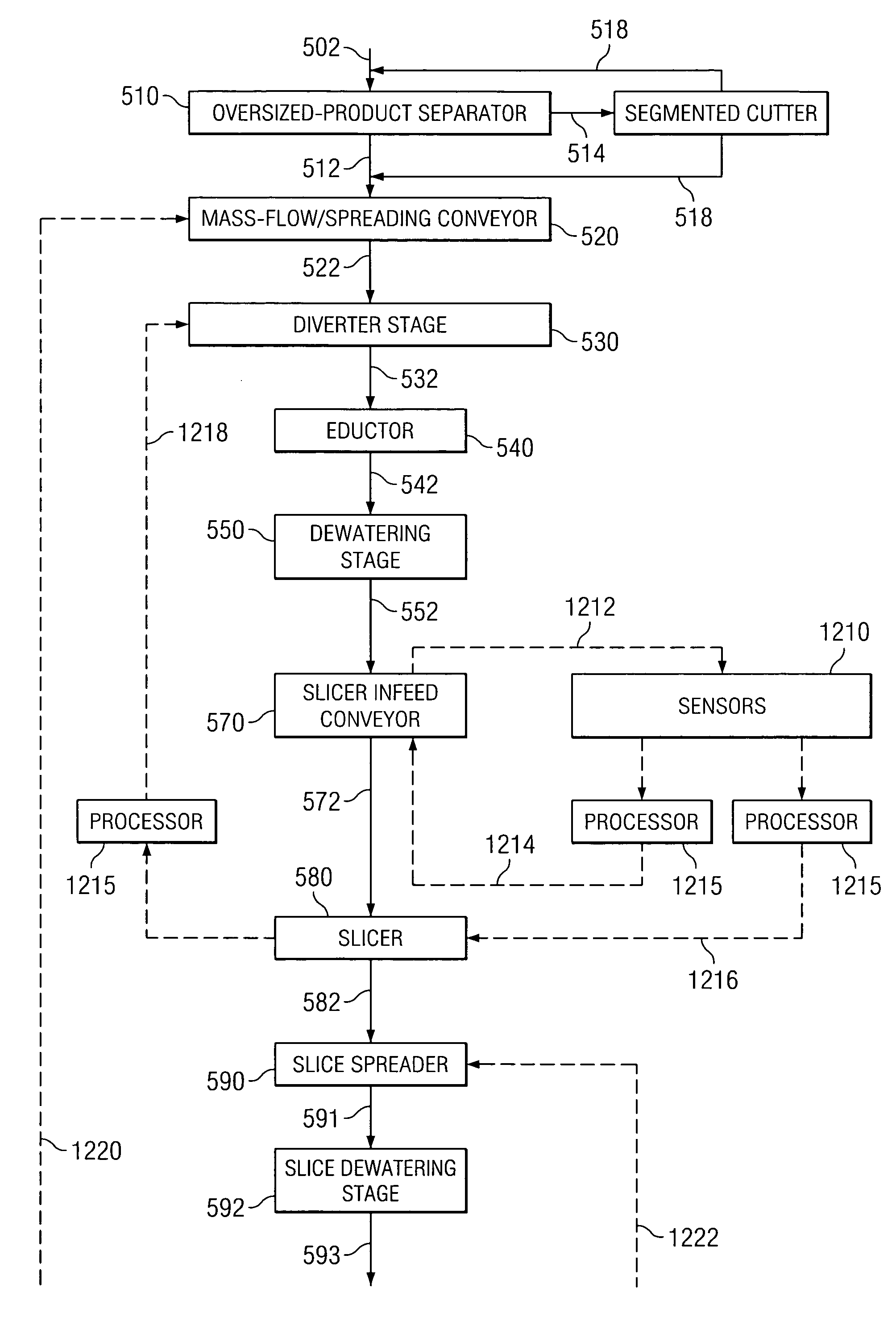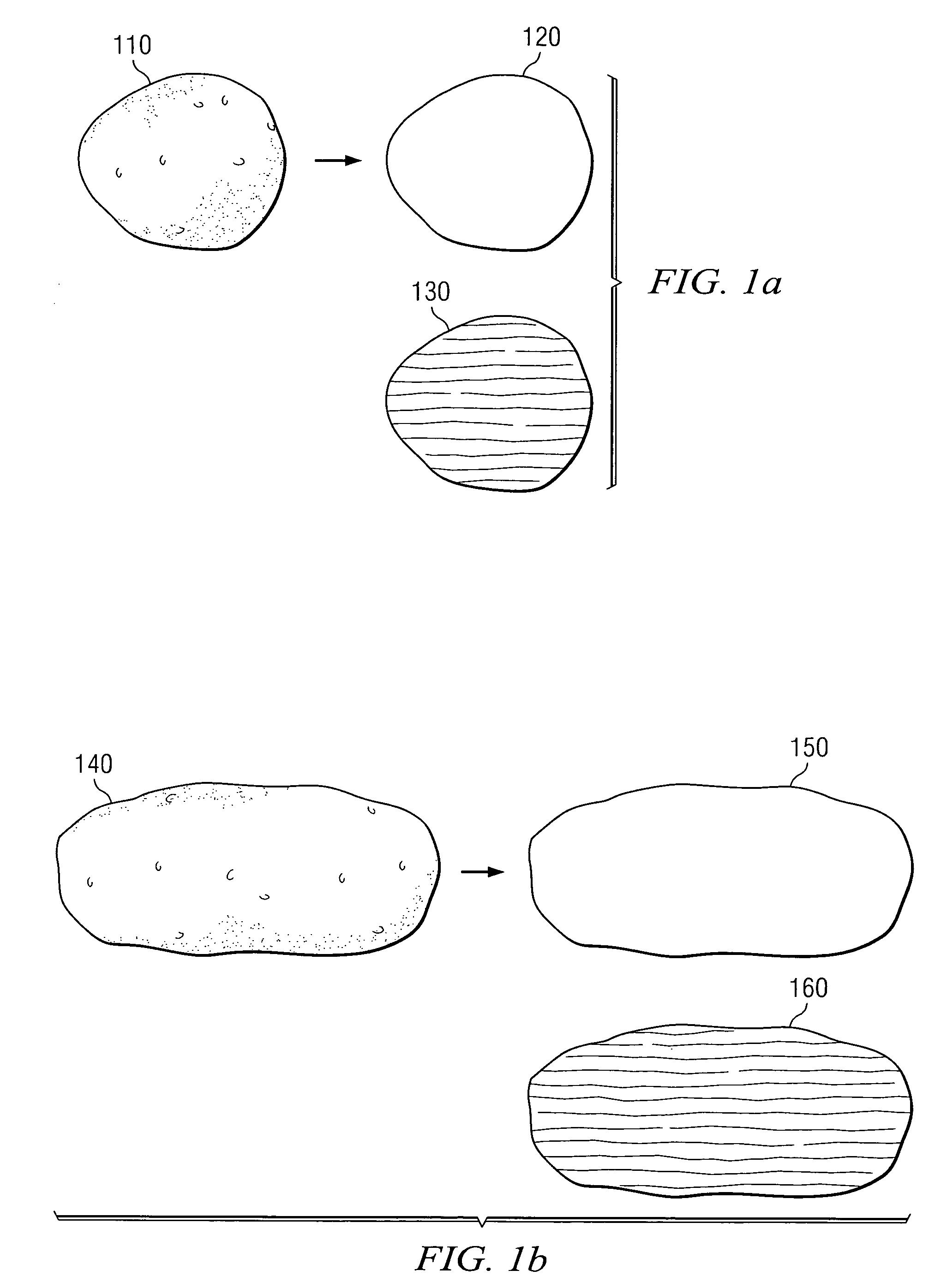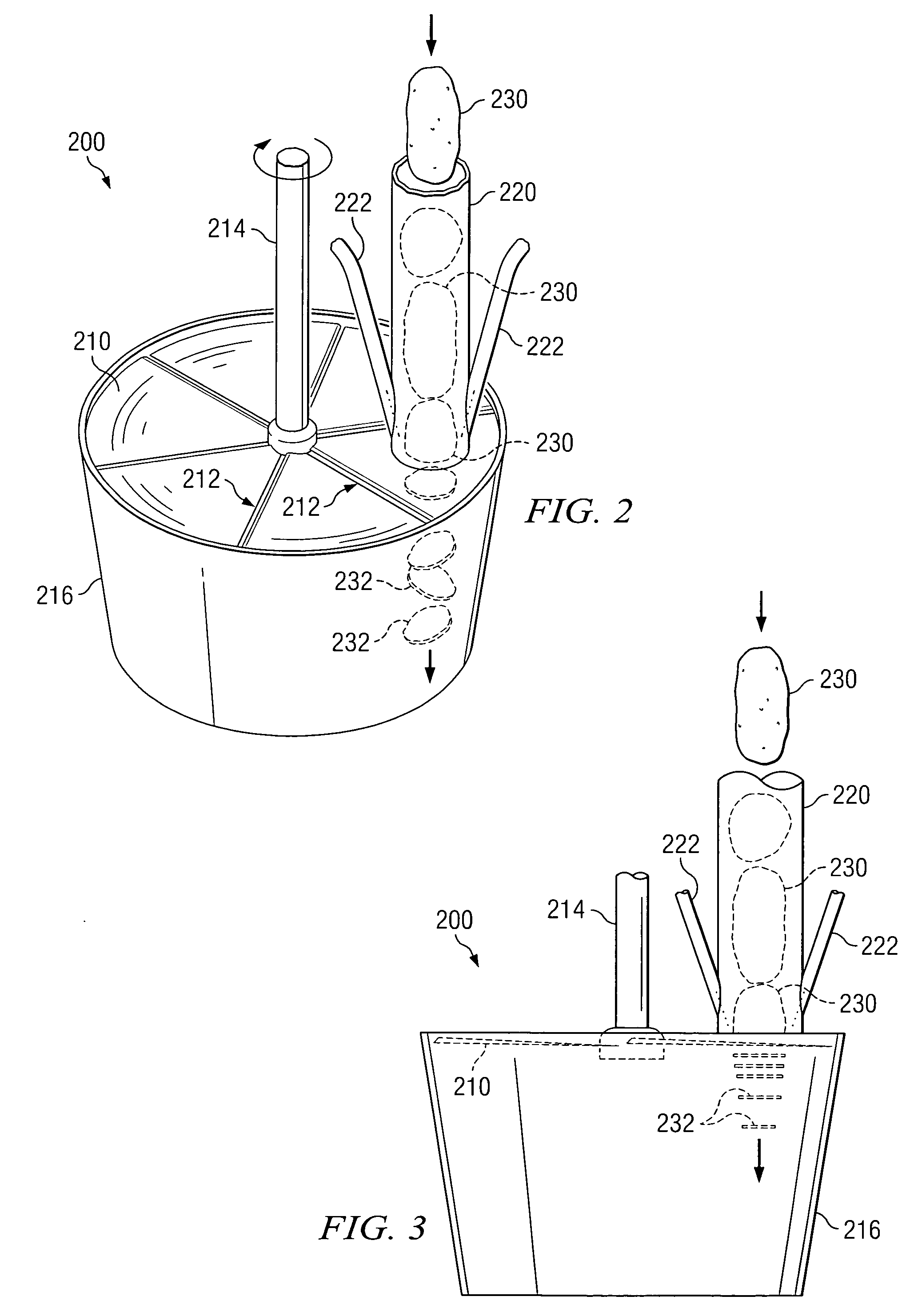System for conveying and slicing
a technology of conveying system and slicing machine, which is applied in the direction of transportation and packaging, bulk conveyor, food preparation, etc., can solve the problems of reducing yield, potato damage, and affecting the quality of potato, so as to reduce the loss of cutting, the transfer speed and the effect of gentle washing
- Summary
- Abstract
- Description
- Claims
- Application Information
AI Technical Summary
Benefits of technology
Problems solved by technology
Method used
Image
Examples
Embodiment Construction
[0048]While the invention is described below with respect to a preferred embodiment in which potatoes are reduced using a plurality of transverse slicers, other embodiments are possible. The concepts disclosed herein apply equally to systems for slicing other types of produce and food items including vegetables, tubers, nuts, and fruit. Furthermore, the invention is not limited to the use of transverse slicers, and other types of slicers can be used. It should also be noted that in the illustrated embodiments, the various objects and layers are drawn at a scale suitable for illustration rather than at the scale of the actual material.
[0049]FIG. 5 is a flow chart of a food processing / slicing system having one or more slicers 580 in accordance with one embodiment of the present invention. The path of the product to be sliced is represented by solid lines, and the presence of water is represented with dotted lines. In a preferred embodiment, whole peeled potatoes ...
PUM
| Property | Measurement | Unit |
|---|---|---|
| specific gravity | aaaaa | aaaaa |
| specific gravity | aaaaa | aaaaa |
| specific gravity | aaaaa | aaaaa |
Abstract
Description
Claims
Application Information
 Login to View More
Login to View More - R&D Engineer
- R&D Manager
- IP Professional
- Industry Leading Data Capabilities
- Powerful AI technology
- Patent DNA Extraction
Browse by: Latest US Patents, China's latest patents, Technical Efficacy Thesaurus, Application Domain, Technology Topic, Popular Technical Reports.
© 2024 PatSnap. All rights reserved.Legal|Privacy policy|Modern Slavery Act Transparency Statement|Sitemap|About US| Contact US: help@patsnap.com










